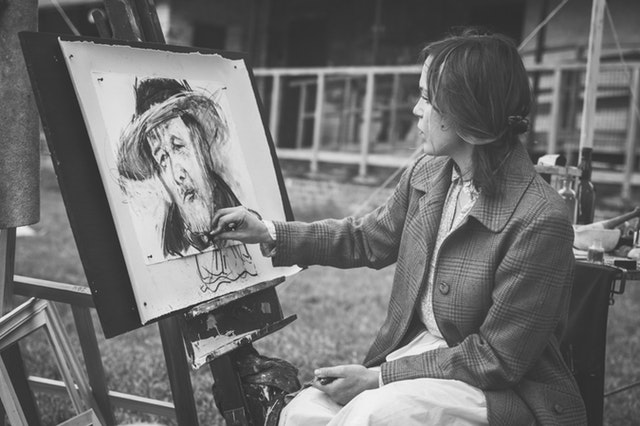“You use a mirror to see your face, you use art to see your soul.”
George Bernard Shaw
Mark Nepo, the prolific poet, transformational writer, and cancer survivor has a new book out in 2019 called “drinking from the river of light – the life of expression,” (purposely all in lower case) published through Sounds True. In an interview with Tami Simon, the founder of Sounds True, he made the following comment:
“All this is really about exploring, and I do feel that, chances are, if I devote myself to a whole-hearted form of expression, of personal expression, chances are what comes out will be useful, maybe even beautiful, certainly substantial and strong. But if I strive to create something beautiful, it may not be life-giving.”
What Nepo illuminates in this statement is a hard-earned wisdom about the path of creative expression, as well as of life itself.
Our initial inspirations can come from any mix of elements: emotions needing voice, subterranean pressures from the depths of our body, a message from God, a message of our soul wanting form, simple curiosity that persistently captures our attention, an urge to make something cool, or just plain garden variety passion. It all works.
However, when we actually start the long haul of a creative expression, when we actually get to work, it’s important to let moment by moment listening to what the heart wants to say take precedence over the inspirational vision that got us started.
Inspiration is great. Lots of excitement and good feelings and a sense of being connected; inspiration can get us going. Yet inspiration is just the first breath, just the first of the many, many breaths that follow. And each breath that follows is breathing through a new present moment and all that we are experiencing within that moment.
It’s a mindfulness thing. When we’re straining too much to match our concept of how the work should be, we’ve stopped paying attention to the richness of the moment. We’re stuck in the past, the idea we started out with, and we’re stuck in the future, how we expect the work to turn out. But the substance that ultimately evolves the work to something more than just decoration is in our authenticity and humanity. The play of dark and light, the joy and suffering, confusion and clarity, love and loss, are all there, to be sheltered and heard during the creative process.
Completion of our creation will very often be different than the vision we started with. And more often than not, if we’ve paid attention to where the heart goes, the completed work will be better than the original vision. Maybe not as “beautiful” as we had emoted in our original inspiration, but likely more grounded, more real, more whole-hearted, more life giving.
By “life giving,” I mean that there is a tangible substance to the work, some authenticity that resonates with us and connects to the hearts of others. Something that helps us to feel life.
Spiritually, our job in the creative process is to return our attention to the present moment. When we allow ourselves to breathe and abide in our intimate, vulnerable present moment, we’re dipping our toes into “the river of light” that Nepo writes about. Embarking on that river of light, the currents, the curves, the turbulence and flow, all lead us to what is real to our heart.
I suspect that beneath every creative expression is the breath wanting to breathe with a whole heart. Beauty.
I’m going to use author and teacher, Brene Brown’s words rather than my own to end this article. Perhaps I’m being a bit lazy, but she speaks so directly of the value of vulnerability, authenticity, and connection in a whole-hearted life, and everything she describes I’ve found to be fundamental to my creative process.
Brene Brown spent six years of research interviewing what she called, whole hearted people, people who believed they were worthy of love and belonging, of connection. She found that there were traits these people had in common.
“I want to separate courage and bravery for you for a minute. Courage, the original definition of courage when it first came into the English language – it’s from the Latin word cor, meaning heart – was to tell the story of who you are with your whole heart. So these folks had, very simply, the courage to be imperfect. They had the compassion to be kind to themselves first and then to others, because, as it turns out, we can’t practice compassion with other people if we can’t treat ourselves kindly. They had connection, and this was the hard part, as a result of authenticity. They were willing to let go of who they thought they should be in order to be who they were, which you absolutely have to do for connection. The other thing that they had in common was they fully embraced vulnerability. They believed that what made them vulnerable made them beautiful. They didn’t talk about vulnerability being comfortable, nor did they talk about it being excruciating. They just talked about it being necessary. They talked about the willingness to say “I love you” first, the willingness to do something where there are no guarantees, the willingness to breathe through waiting for the doctor to call after your mammogram. They’re willing to invest in a relationship that may or may not work out. They thought that this was fundamental.”
Brene Brown
Woo

